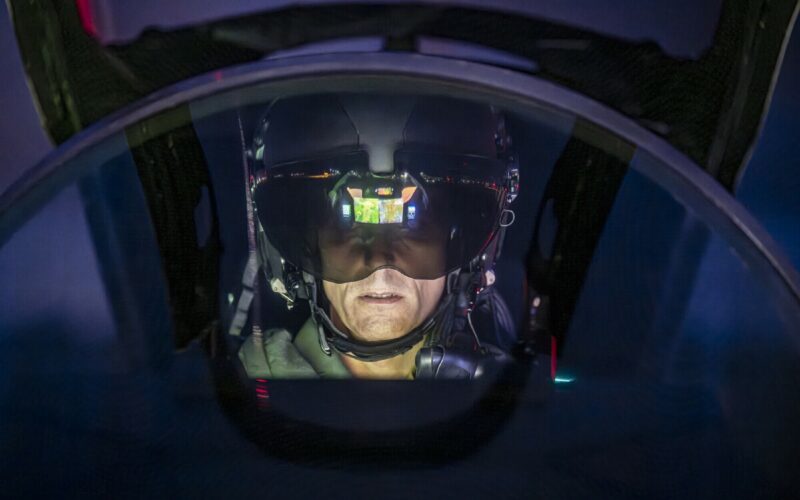The British Ministry of Defense has made a significant investment in BAE Systems’ cutting-edge fighter jet helmet called Striker II.
Under the $49.6 million (£40 million) contract engineers are maturing the helmet’s capability ahead of the start of initial production to support qualification and integration flight-testing at BAE Systems’ combat air site in Warton, Lancashire.
Once development of the Striker II is completed the helmet, which boasts an advanced display visor and night vision, will be used by Royal Air Force (RAF) Eurofighter Typhoon fighter jet pilots.
Developed at BAE Systems in Rochester, Kent, Striker II is one of the world’s most advanced fighter helmets which uses the latest technologies to integrate its all-digital night vision system and daylight readable color display.
Striker II displays data directly onto the pilot’s helmet visor, providing an augmented reality of the real world alongside mission critical information right before their eyes.
Using optical sensors embedded in the aircraft, Striker II immediately calculates the pilot’s exact head position and angle.
This means no matter where the pilot is looking, Striker II displays accurate targeting information and symbology, with near zero latency.
The helmet will also benefit from reduced noise, unparalleled comfort and is capable of being upgraded to meet new battlespace demands, all critical in what can be a highly complex and pressurized environment.
The helmet would further enhance ongoing upgrades to Typhoon, including the provision of the world class ECRS Mk2 radar, to ensure the aircraft can continue its critical role in providing round the clock defense and security.
“Striker II will provide the RAF’s Typhoon pilots with a crucial advantage – offering unrivalled situational awareness from the cockpit while helping to avoid sensory overload, which is vital in a high-tech and fast-paced environment. This contract will enable our electronics and combat air experts to work together to develop the helmet to further enhance the critical role Typhoon pilots play in round-the-clock defense and security of our nation,” Andrea Thompson, managing director of Europe & International, BAE Systems’ Air Sector, said.
The contract will create and sustain more than 200 highly skilled jobs at BAE Systems’ sites in Kent and Lancashire working directly on the Striker II program.
“This contract demonstrates the maturity and progress of the initial design solution for Striker II. It not only meets the UK’s safety requirements by offering high levels of protection and survivability, it expands the situational awareness of the pilot and would increase Typhoon’s lethality. It is a major evolution of Striker I while using the existing interfaces with the aircraft which is reducing both risk and cost for future integration,” Air Cdre Nick Lowe, assistant chief of Staff Combat Air in the RAF, said.

